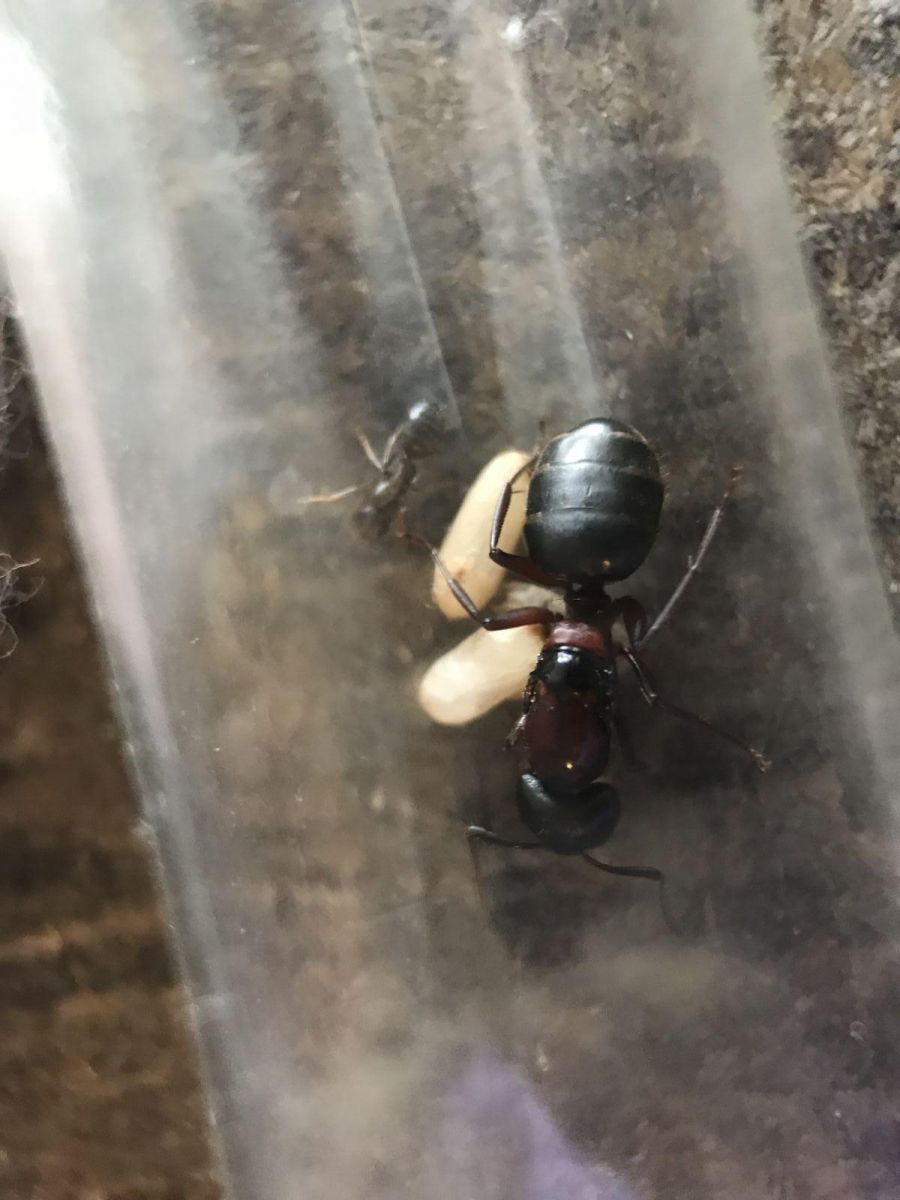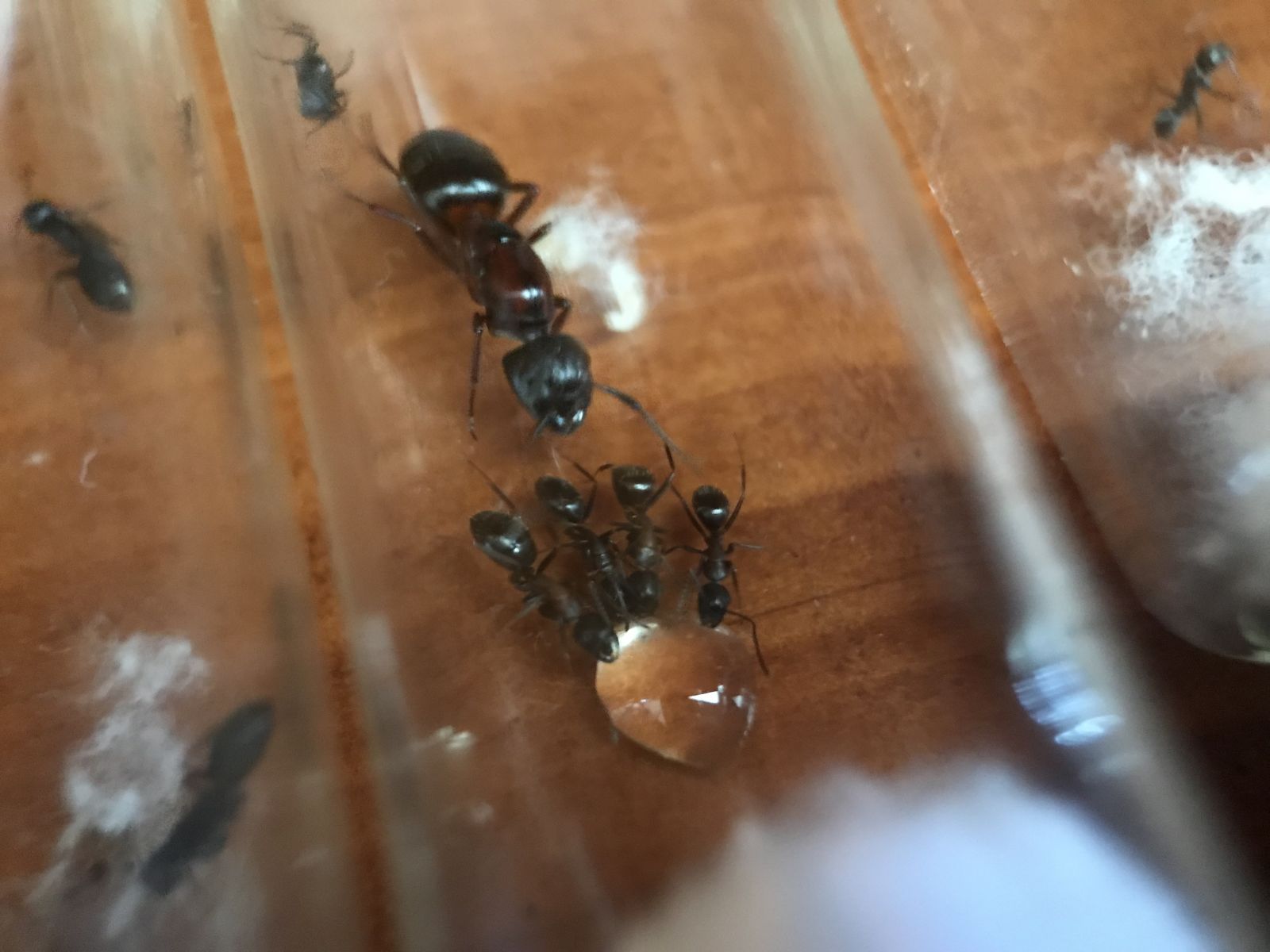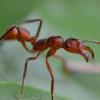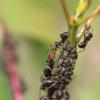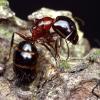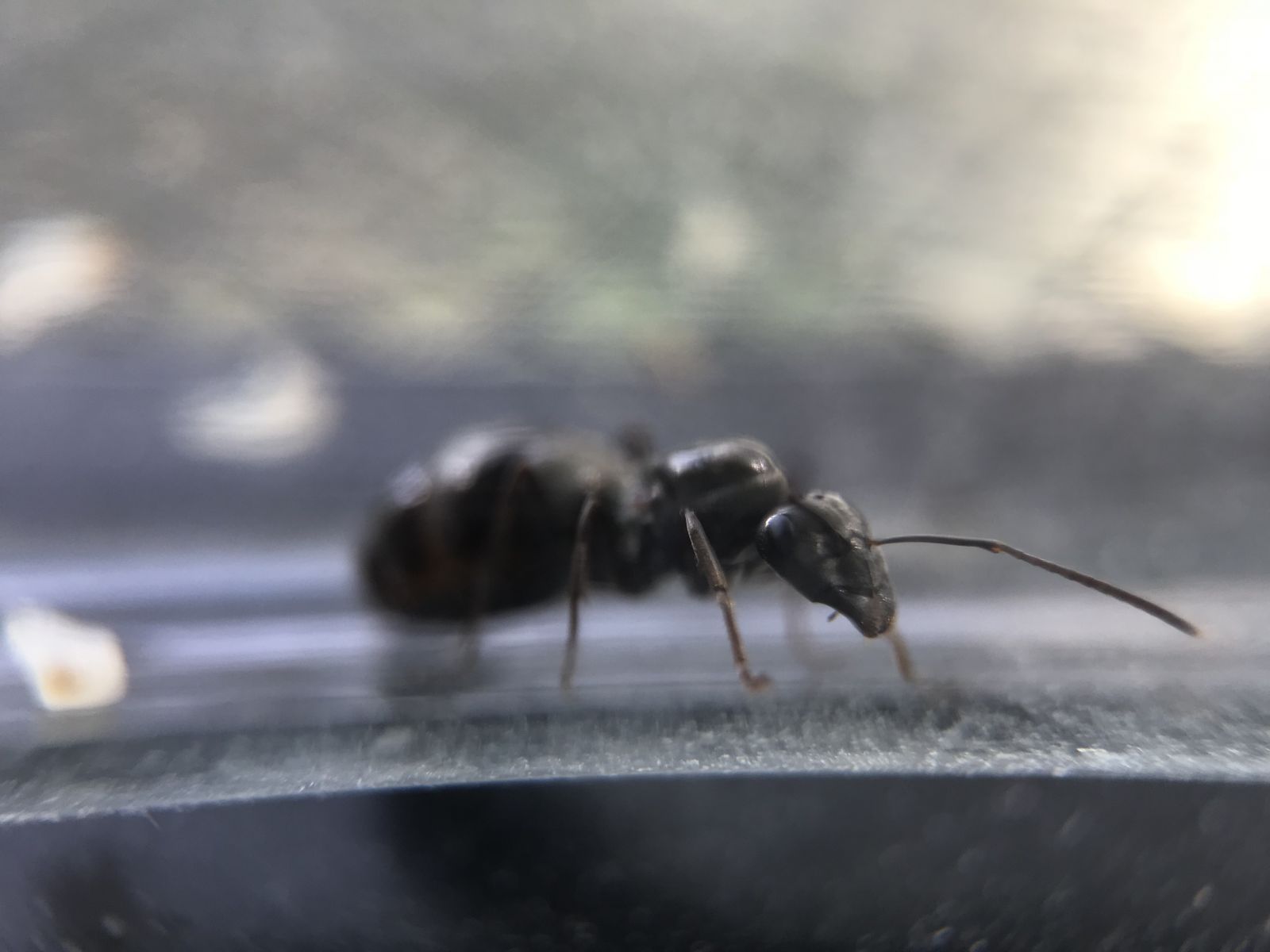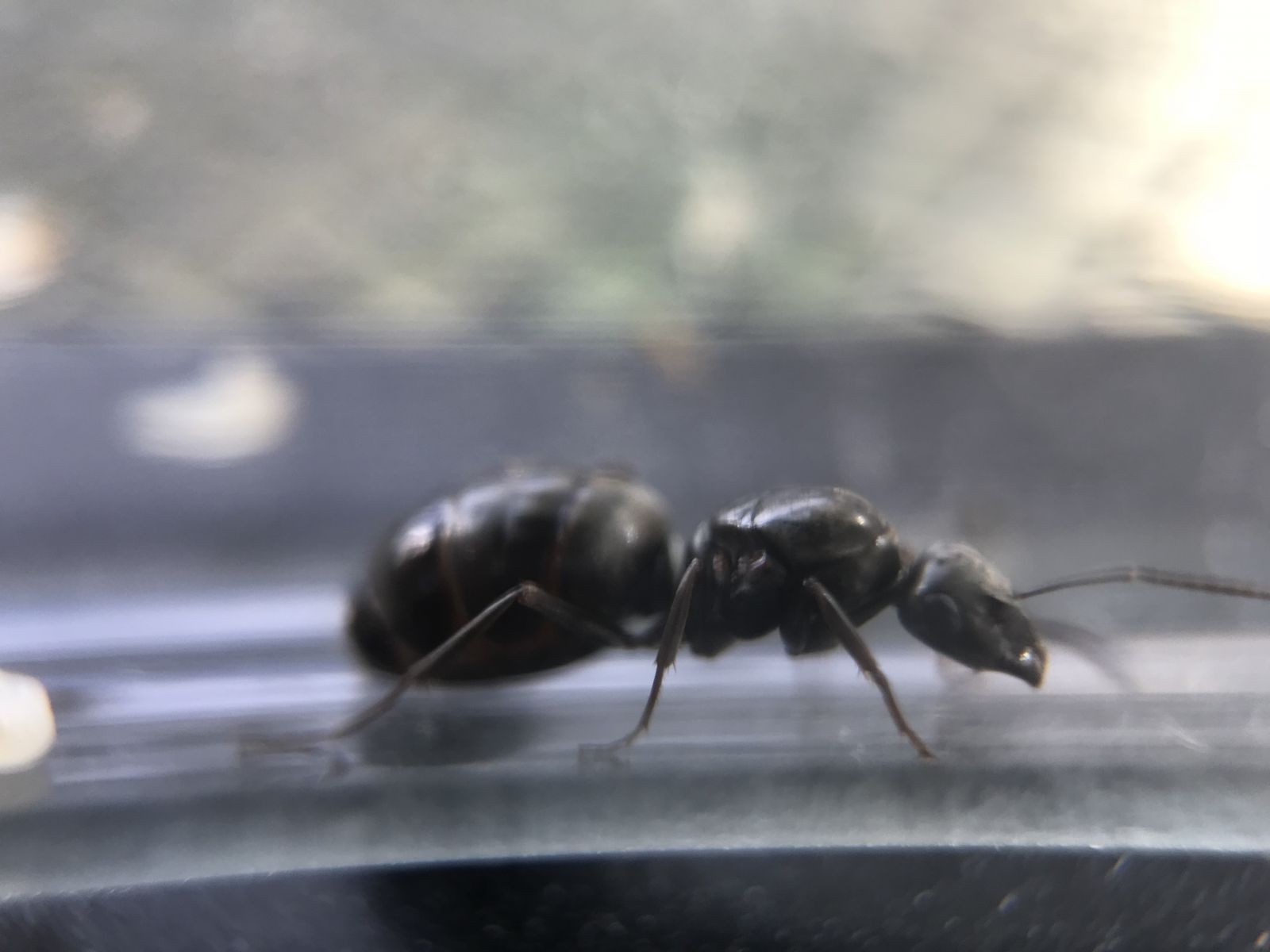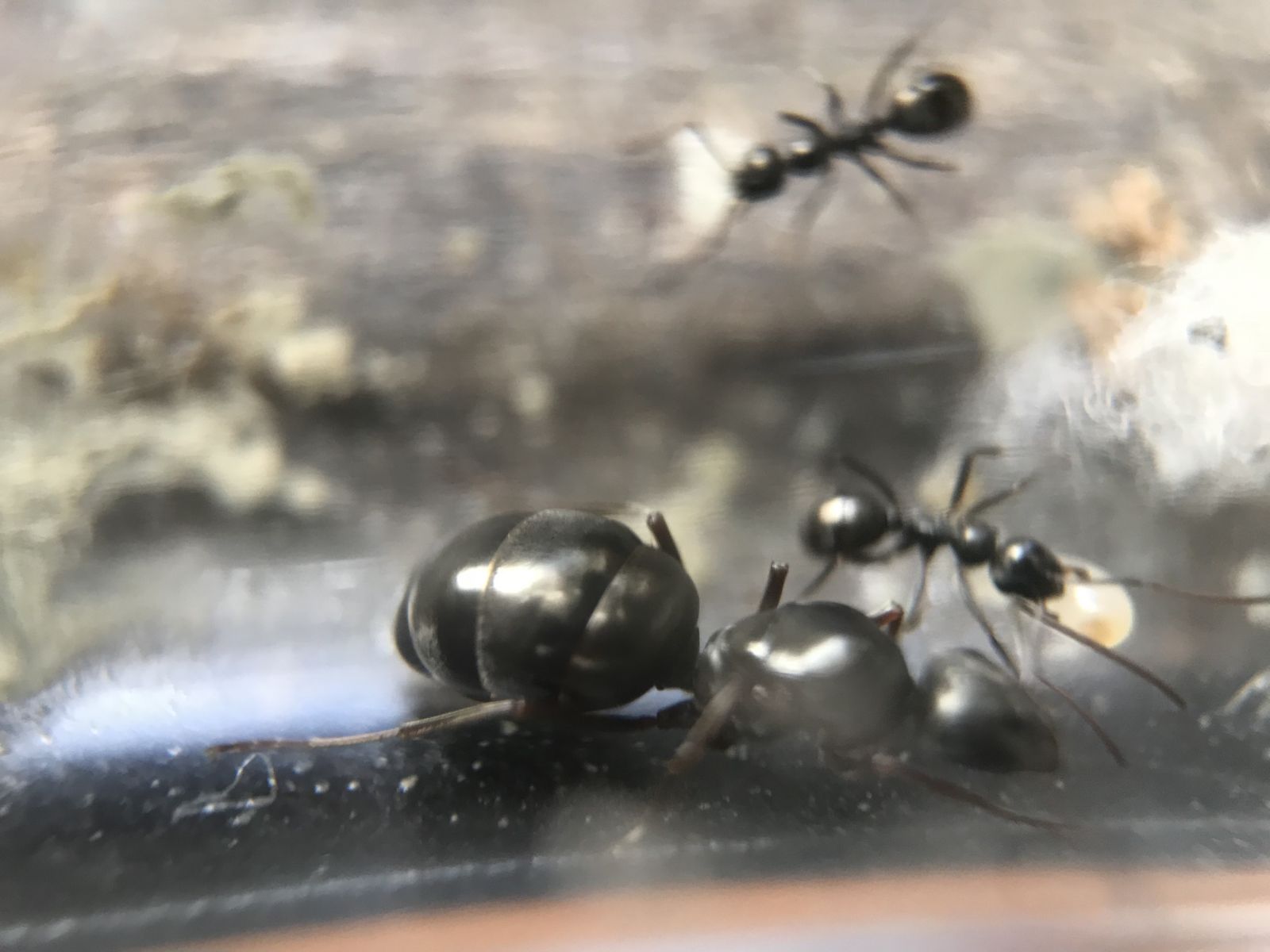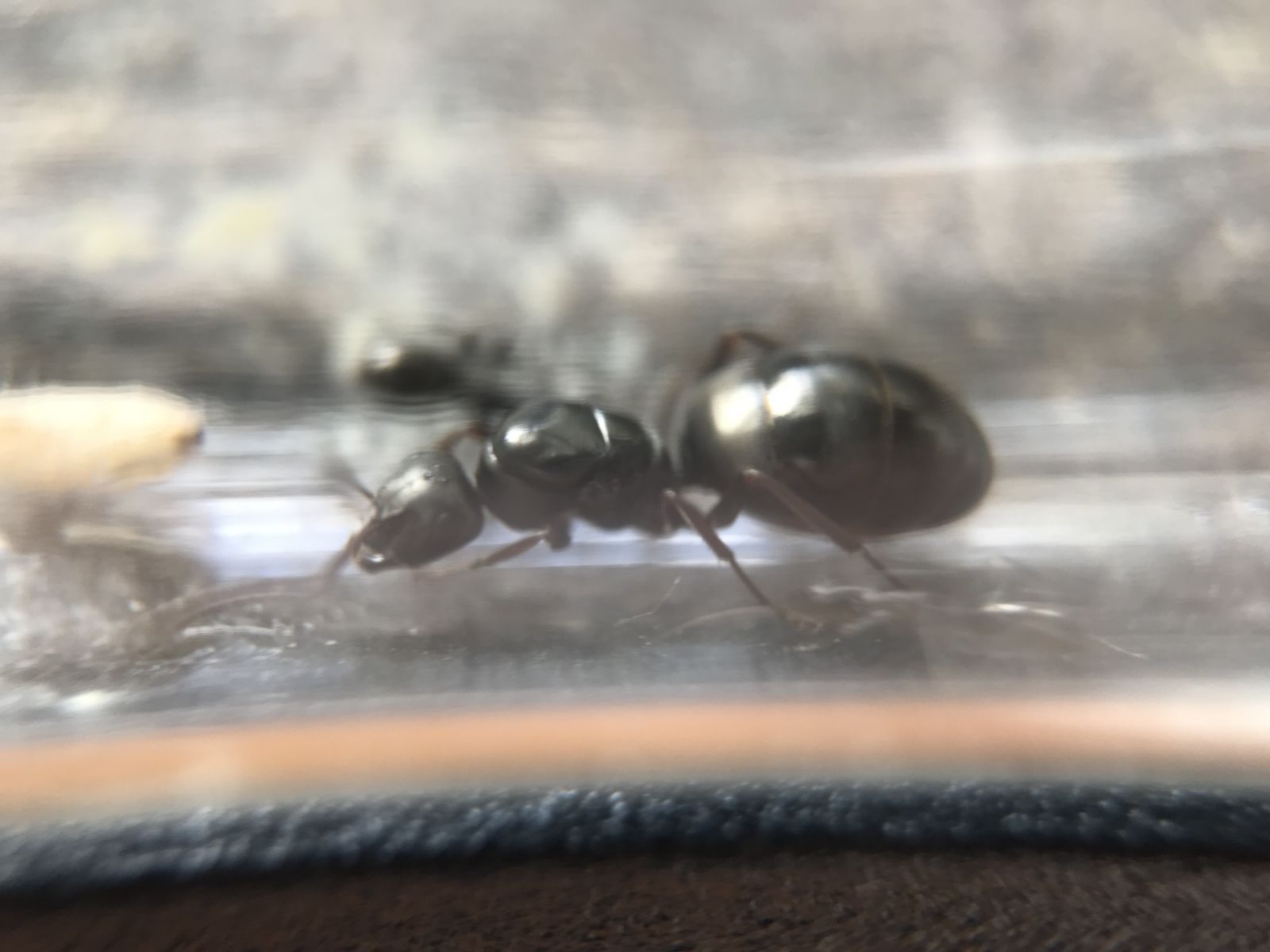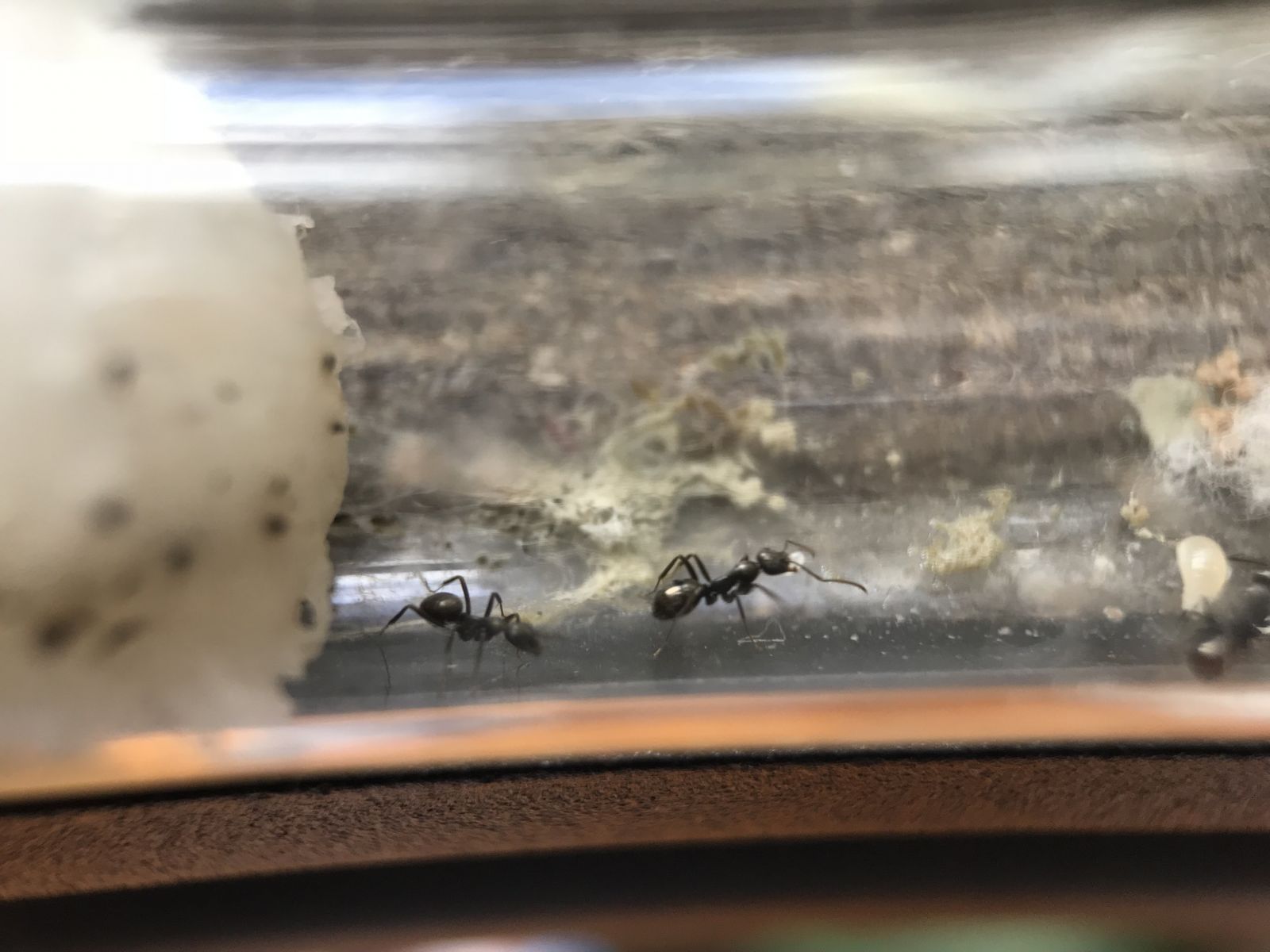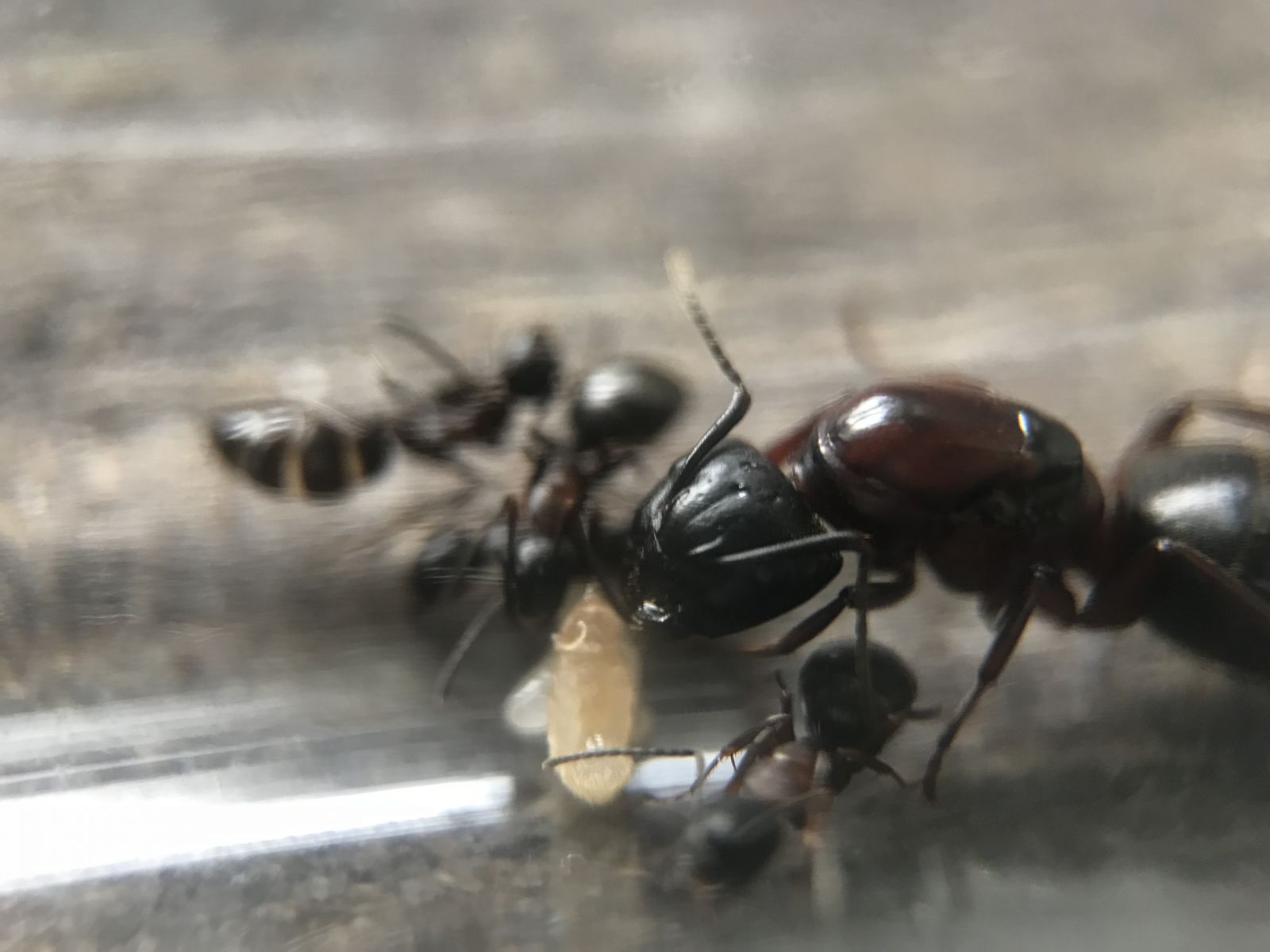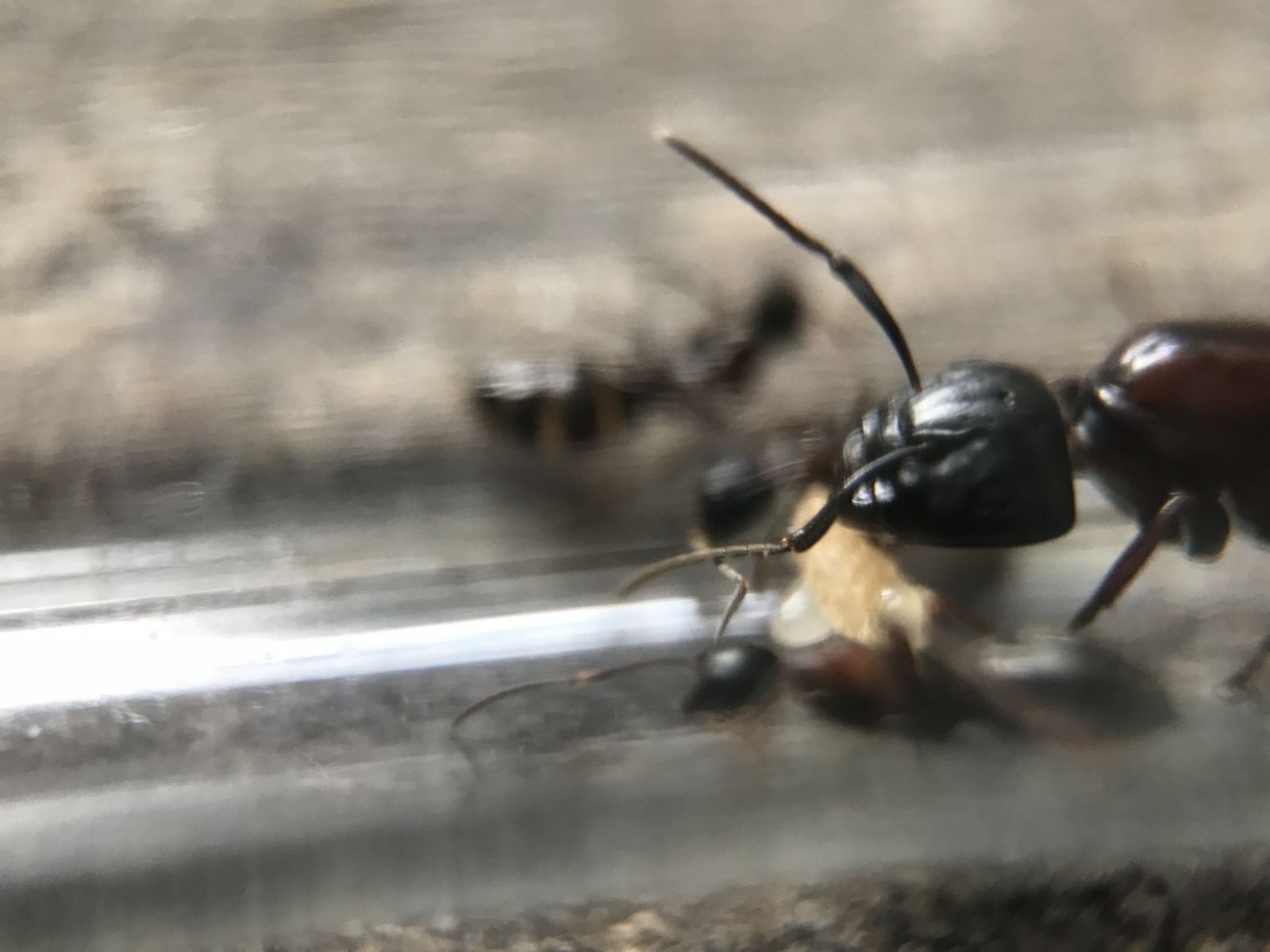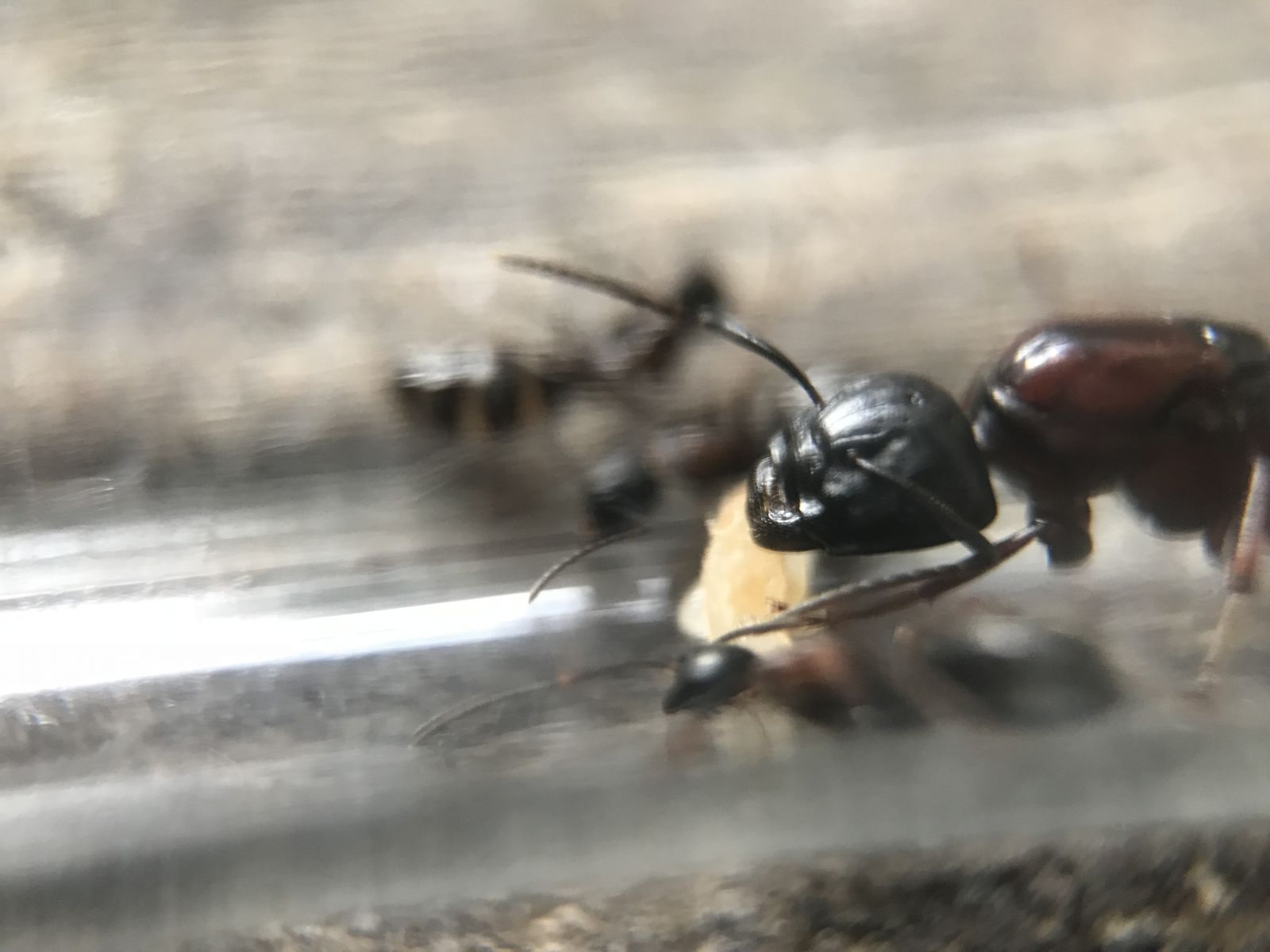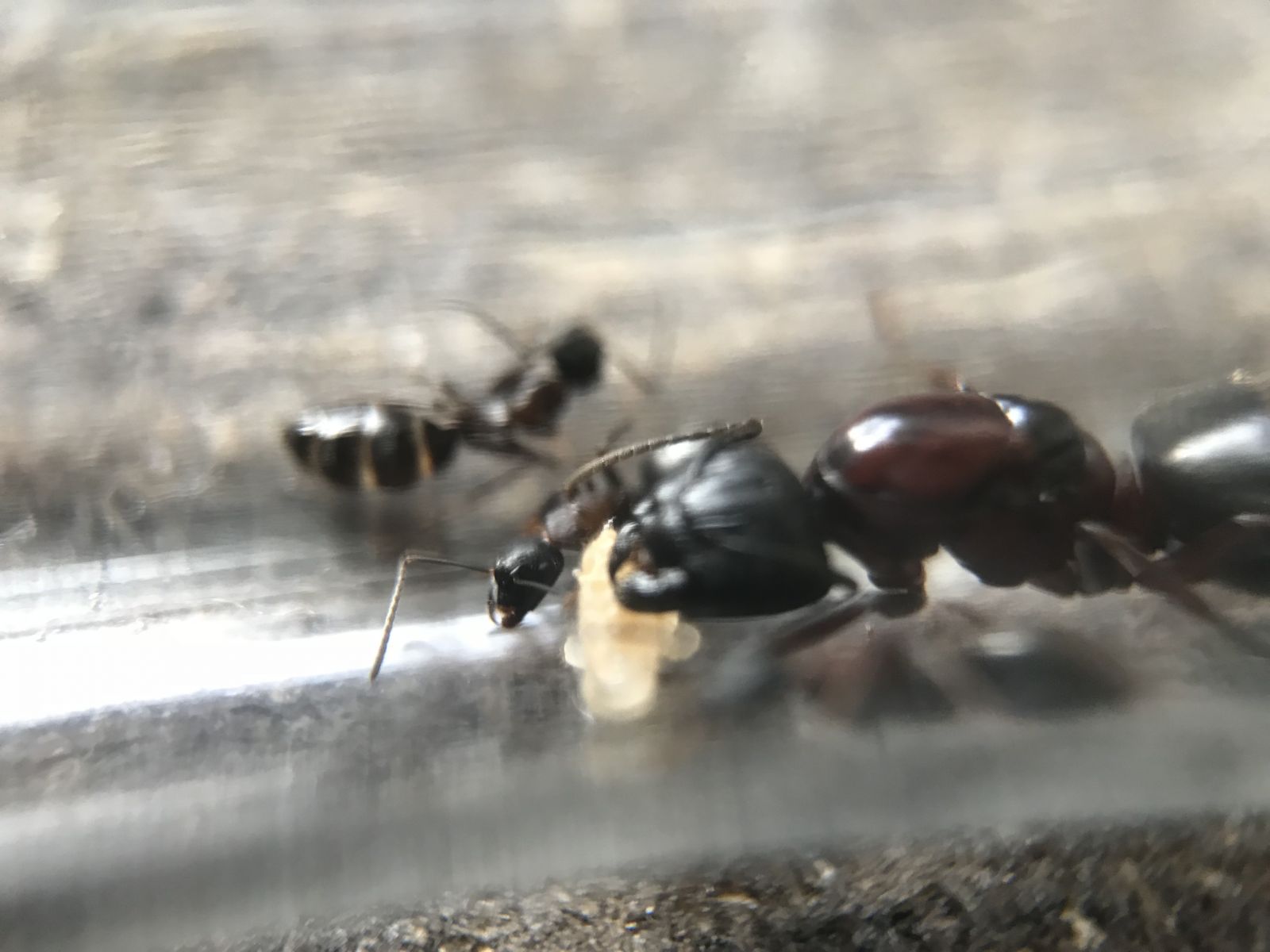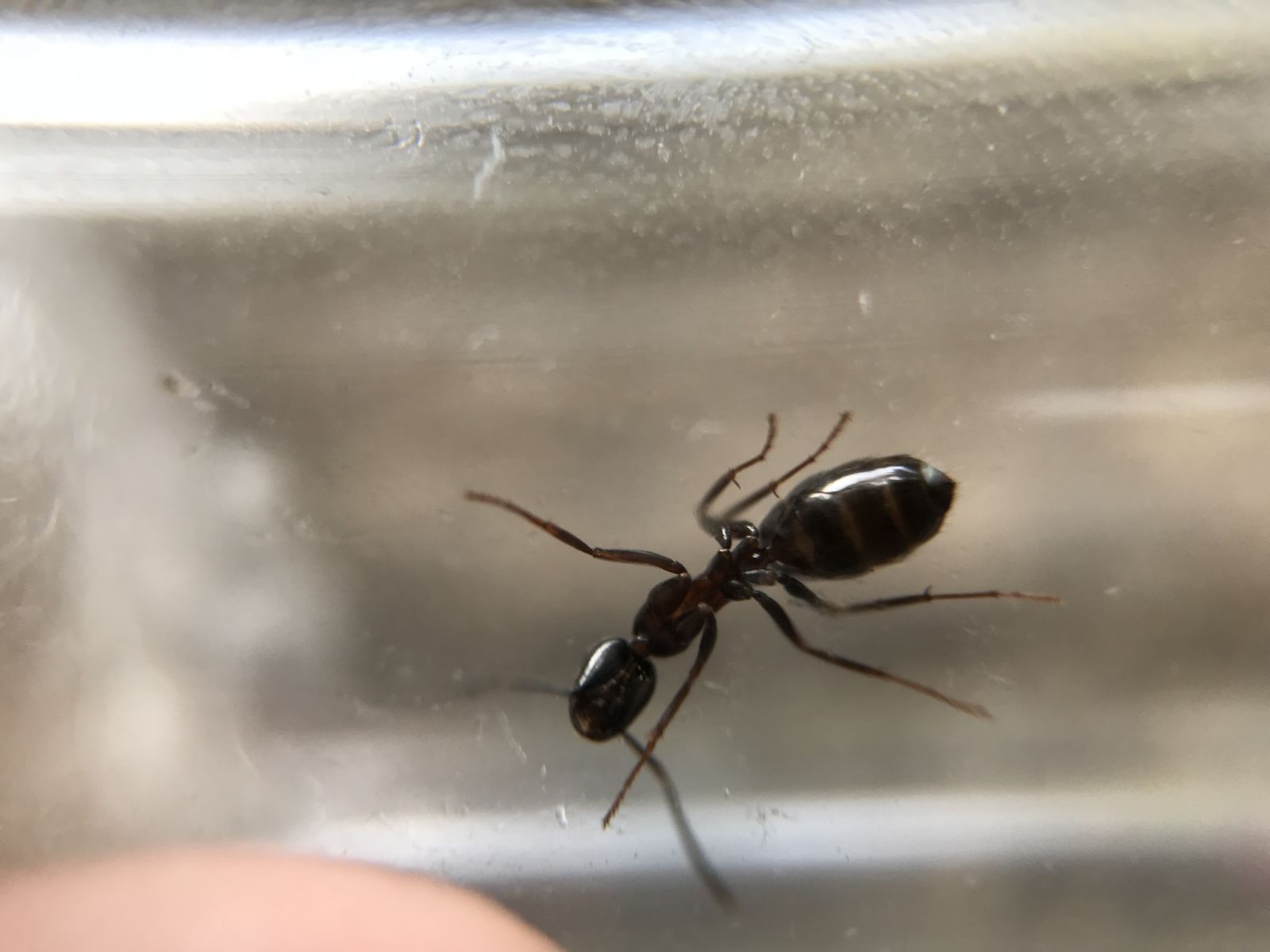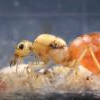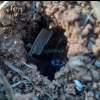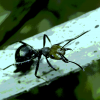All of these queens were found last year, but hadn't done anything serious until early this year.
Queen #1:
1. Location of collection: Road to park in Mill Valley, CA.
2. Date of collection: August 2, 2017 at 2:50 PM.
3. Habitat of collection: Road bordering California coastal scrubland and chaparral.
4. Length: 12-13mm. She's a big girl.
5. Coloration, hue, pattern and texture: Shiny, black. In natural light she has a slight silvery sheen. No apparent hairs.
6. Distinguishing characteristics: None, other than the fact that she is a lot larger than other other similar queens I've found in the same spot.
7. Anything else distinctive: None.
8. Nest description: Looked like it might have been in a crack of the road's pavement, nothing distinguishing.
9. Nuptial flight time and date: August 2.
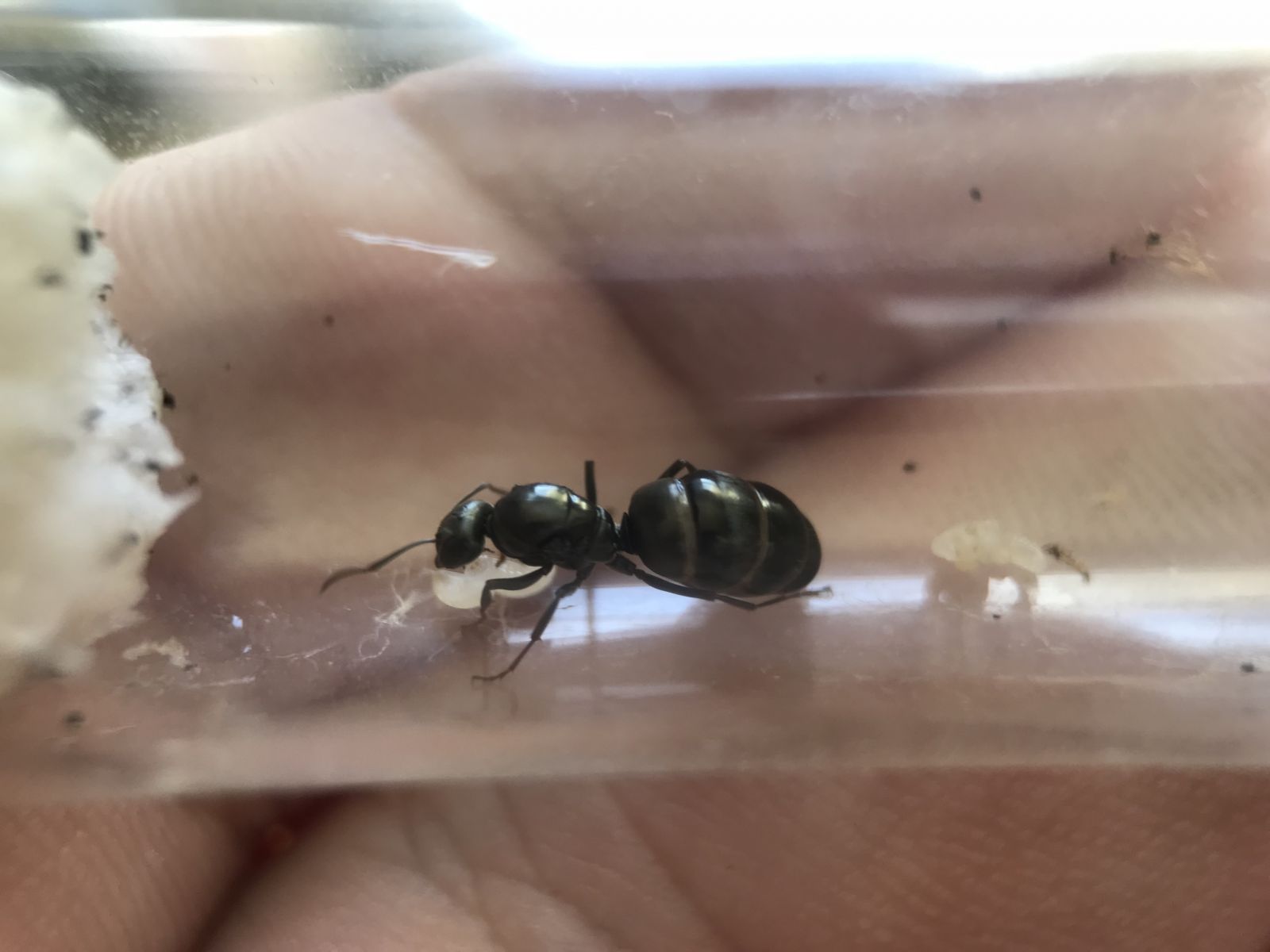
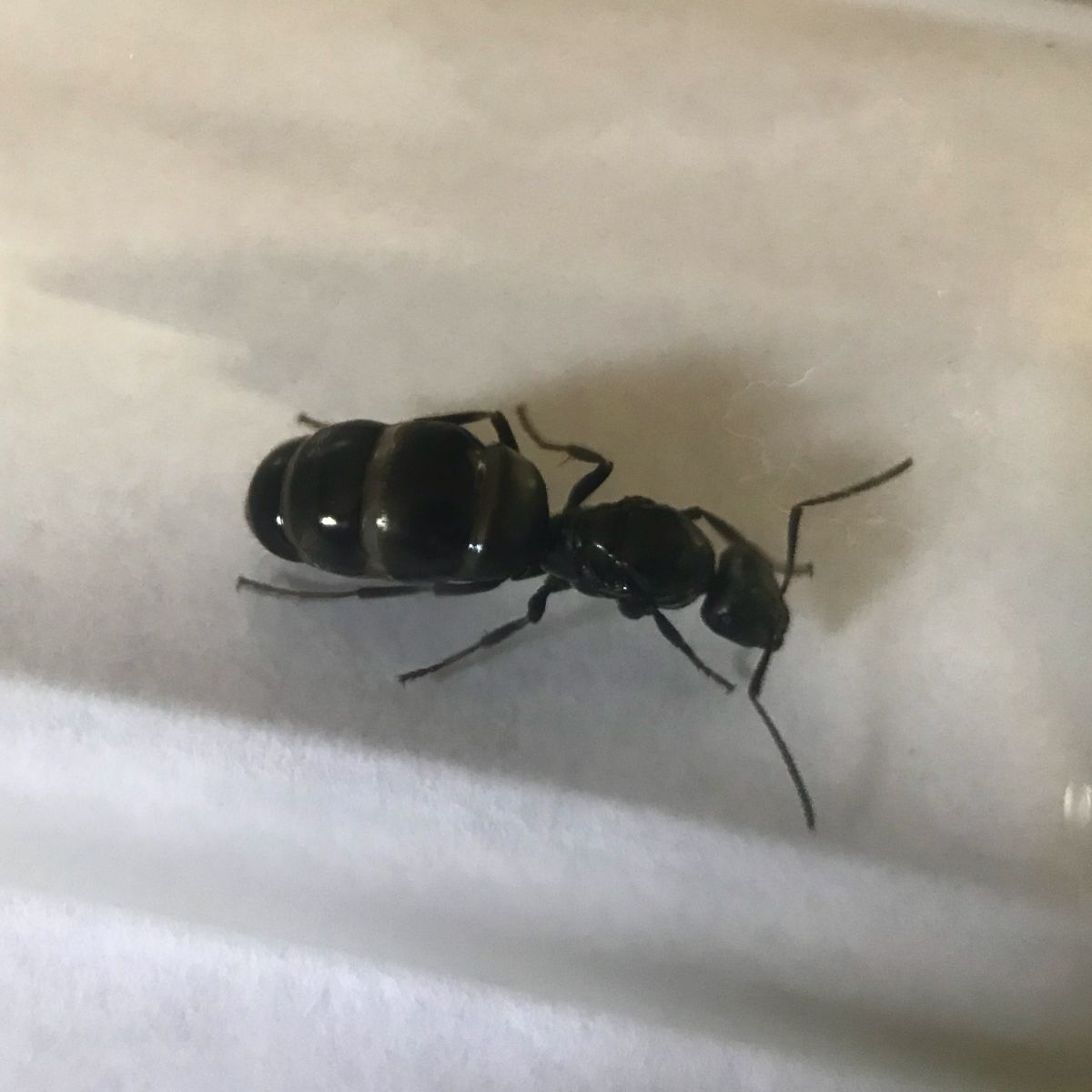
Queen #2:
1. Location of collection: Road to park in Mill Valley, CA.
2. Date of collection: August 2, 2017 ~2:50pm.
3. Habitat of collection: Road bordering coastal scrubland and chaparral.
4. Length: 9mm.
5. Coloration, hue, pattern and texture: Base colour of black, but when she's in natural light she takes on a more gold/green sheen.
6. Distinguishing characteristics: Weird colour scheme for her iridescent sheen, the Formica I see only iridesce in varying shades of silver.
7. Anything else distinctive: None.
8. Nest description: N/A
9. Nuptial flight time and date: August 2.
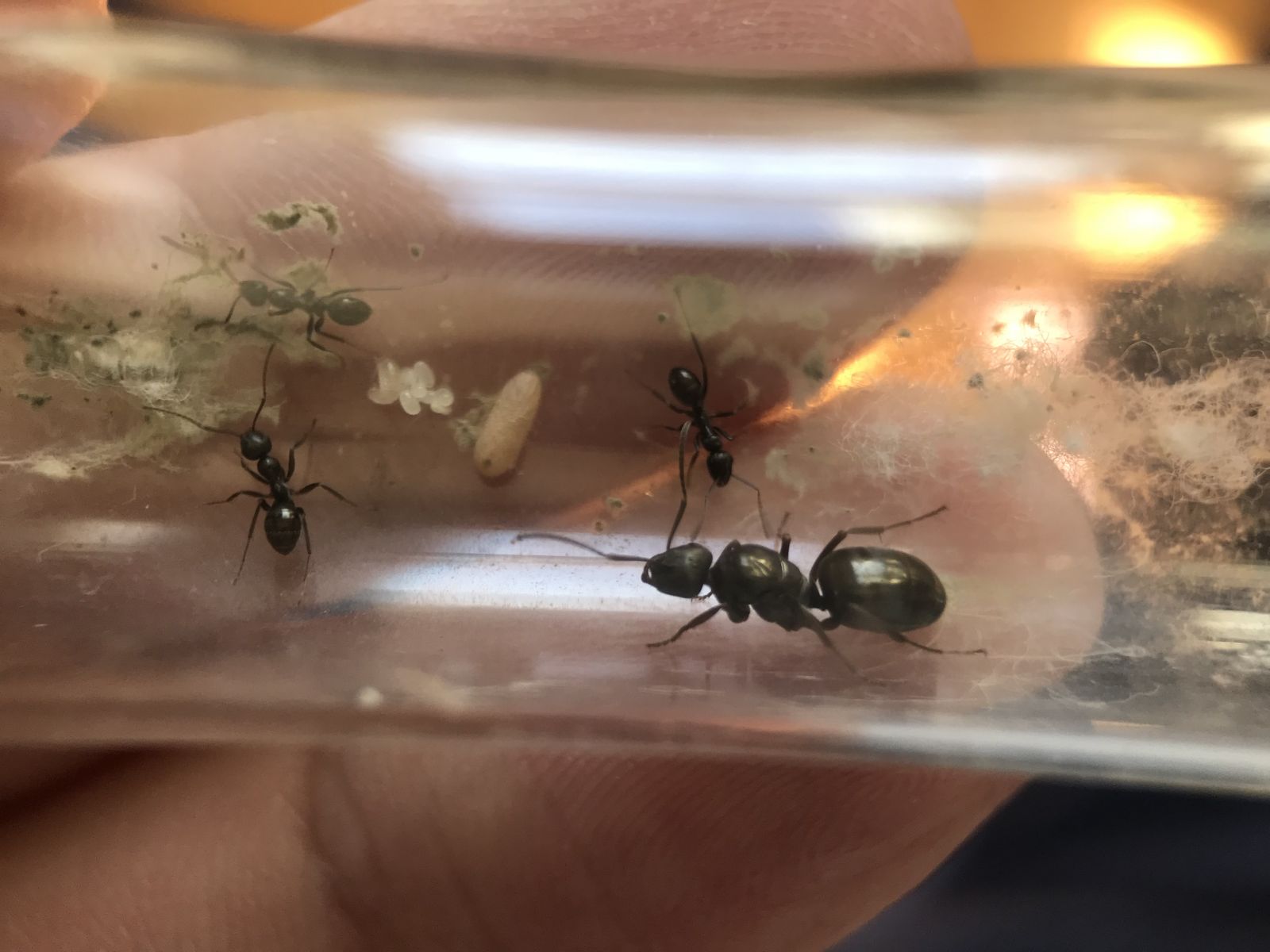
1. Location of collection: Emerald Bay, Lake Tahoe.
2. Date of collection: June 24, 2017 at 1:07 PM.
3. Habitat of collection: Forest.
4. Length: ~15mm. (She doesn't sit still.)
5. Coloration, hue, pattern and texture: Dark gaster and head, red hues to thorax. Red legs.
6. Distinguishing characteristics: Typical camponotus stuff.
7. Anything else distinctive: None.
8. Nest description: N/A
9. Nuptial flight time and date: Unsure, no wings.
I'm thinking C. vicinus for this girl.
